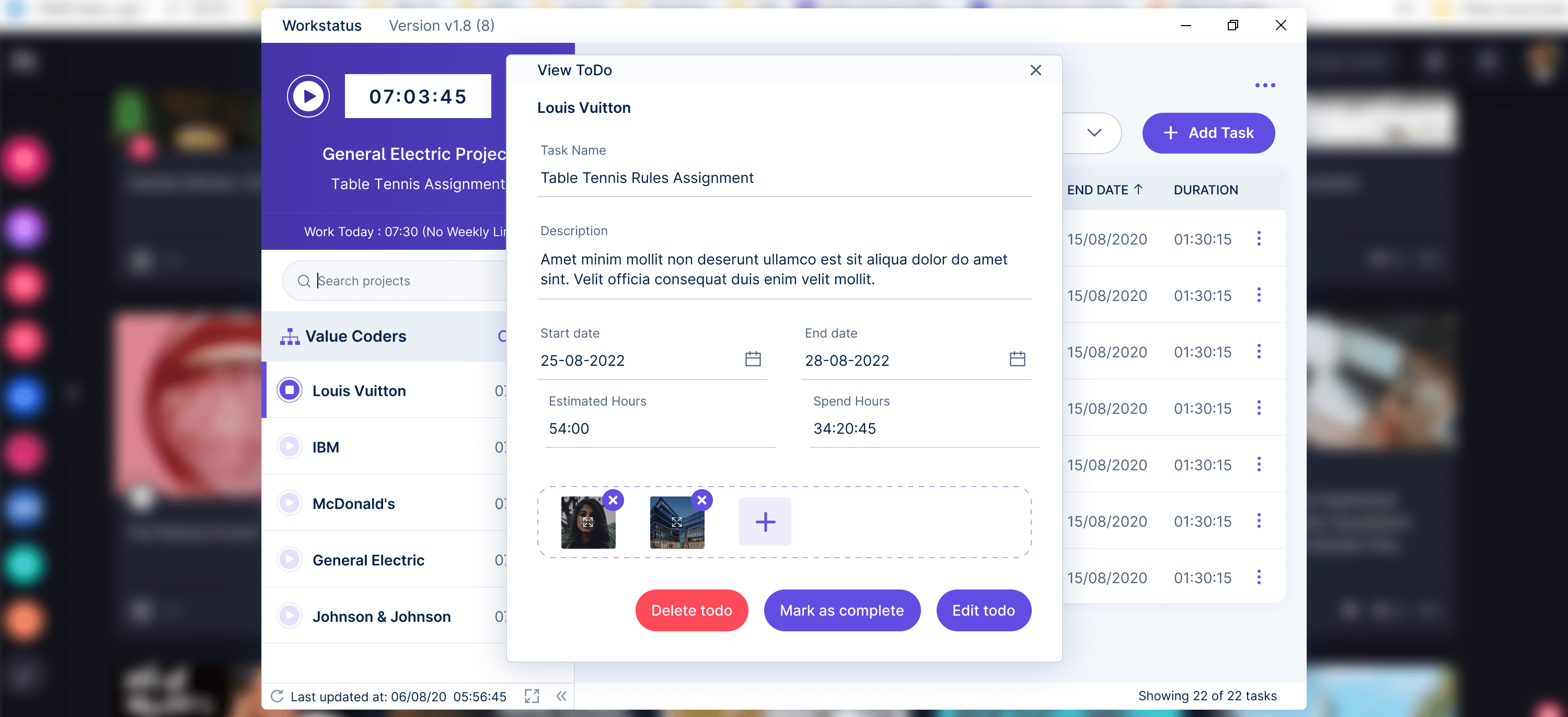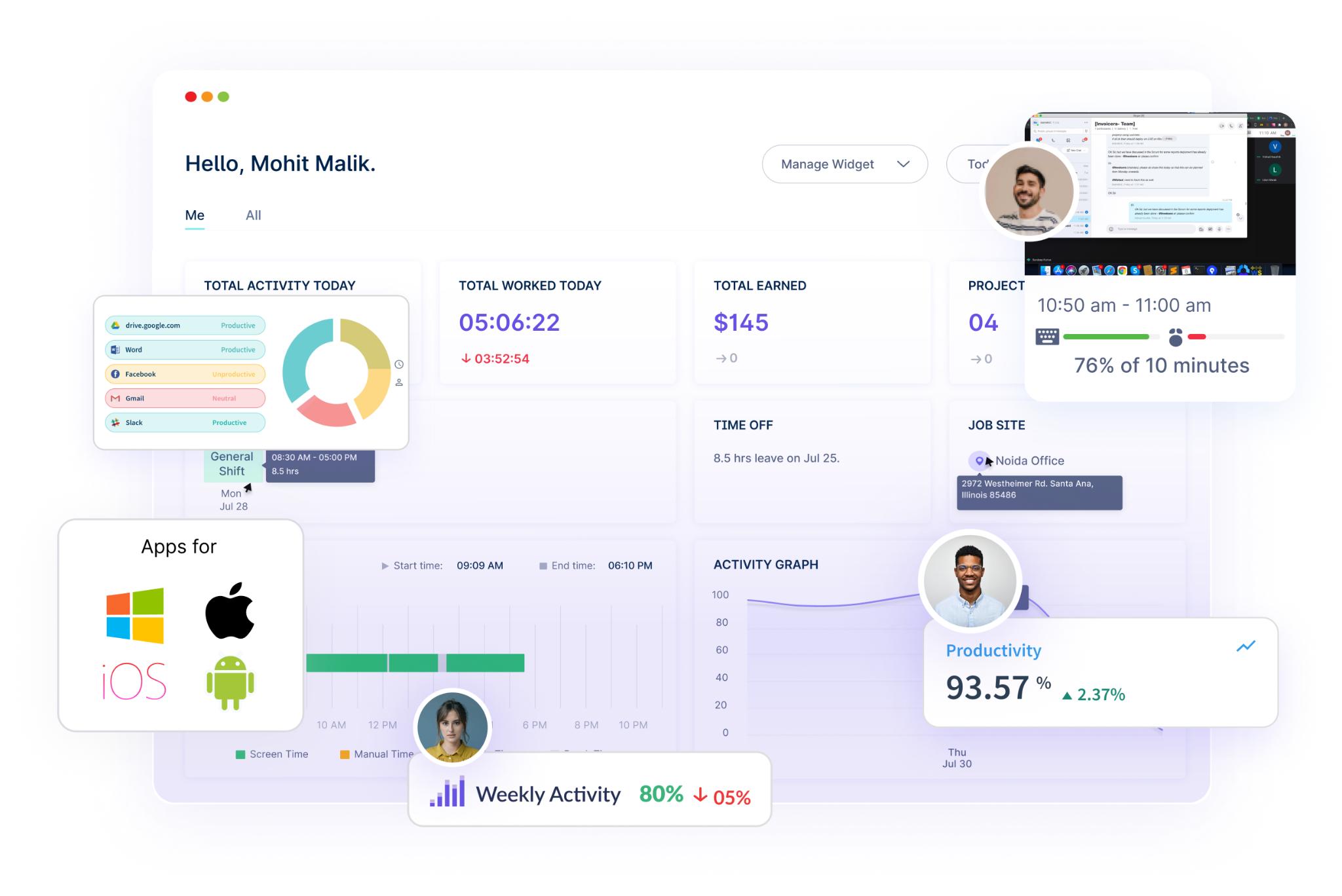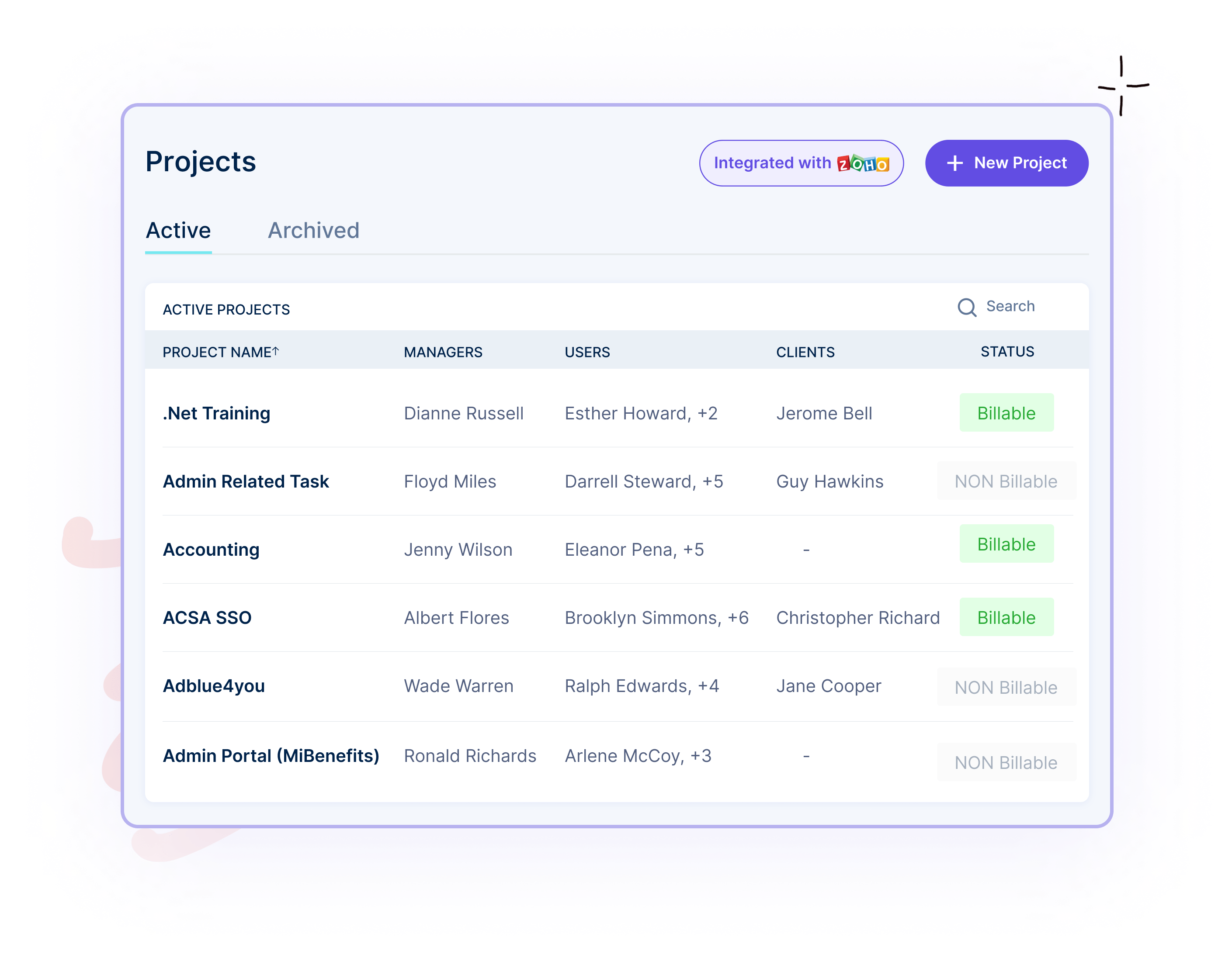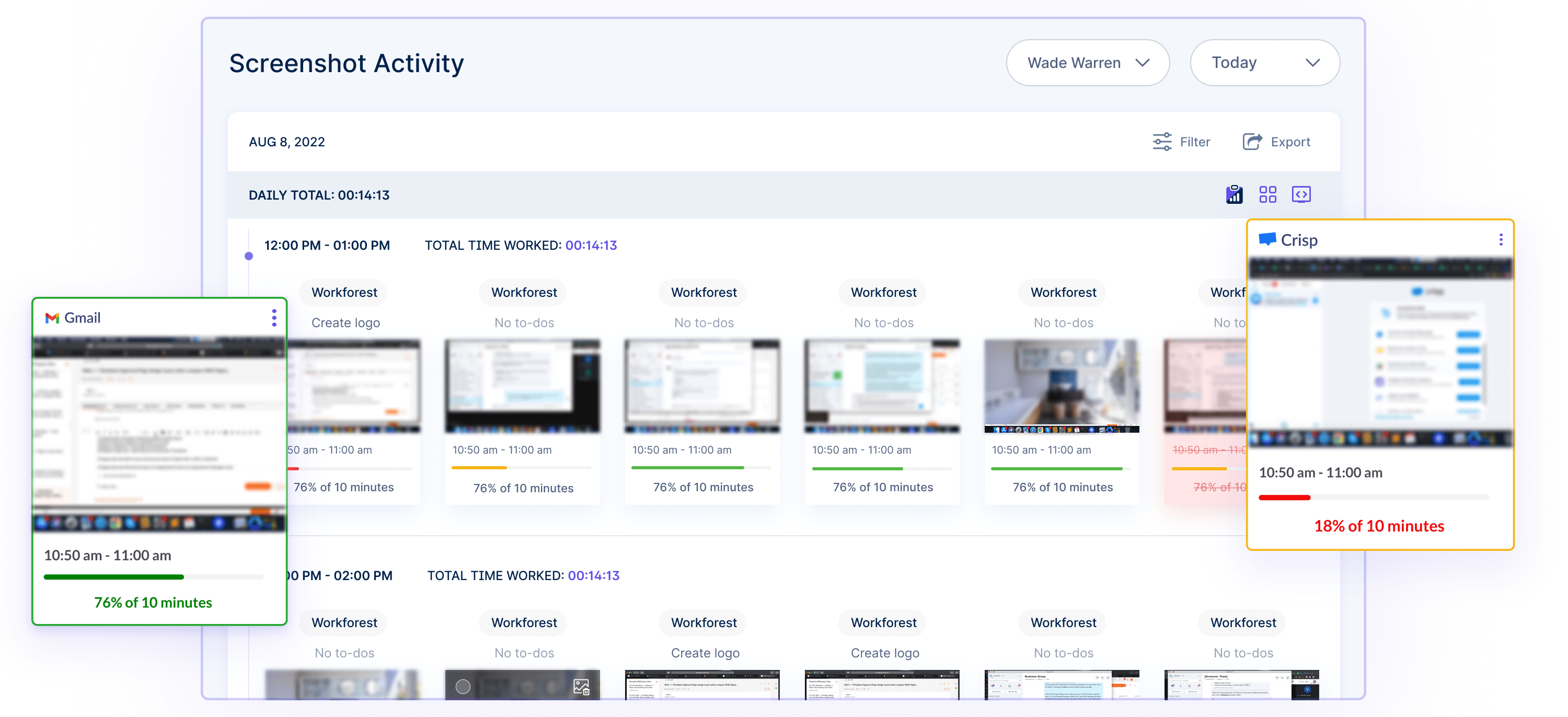Table of Contents
Introduction
Accurate estimations play a significant role in project management, especially in defining project plans, budgets, and schedules. It won’t be wrong to say that the outcomes of the time estimation process greatly influence the outcomes of projects.
However, how can you ensure that your estimations are truly accurate?
The crucial factor lies in the data you utilize in the formulation.
To forecast accurate timeframes and costs, you need a comprehensive understanding of the following:
- Project objectives
- Milestones
- Tasks
A profound comprehension of the workflow is essential to compute the duration required for task completion.
This entails being aware of how your team members carry out their duties, predict possible challenges, and utilize essential tools in their day-to-day tasks to manage their work hours.
Why Is Team-Based Time Estimation More Reliable?
Time estimation is a crucial aspect of project management.
It ensures tasks are completed efficiently and deadlines are met.
While individual time estimation has merits, team-based time estimation is more reliable. Let’s find out why:
Diverse Perspectives
Teams consist of members with varying expertise and viewpoints.
When estimating time collectively, you tap into this diversity, gaining insights from different angles.
It results in a more holistic and accurate assessment of the task’s complexity and potential roadblocks.
Shared Knowledge
Collaborative time estimation lets team members share their insights and experiences related to similar tasks.
This shared knowledge helps identify potential challenges, best practices and shortcuts an individual might overlook.
Checks and Balances
Team-based estimation introduces checks and balances.
One team member’s over-estimation might be balanced by another’s more realistic assessment.
This collaborative approach reduces the risk of overly optimistic or pessimistic estimations that can lead to missed deadlines.
Improved Risk Assessment
A team’s combined expertise enables better risk assessment.
Potential challenges and uncertainties are more likely to be identified and factored into the estimation, reducing surprises during the project’s execution.
Realistic Workload Distribution
Team-based estimation promotes an equitable distribution of workloads.
It ensures team members can handle the situation, fostering a balanced and productive team dynamic.
Steps Involved in Team-Based Time Estimation Using Workstatus
Team Formation and Collaboration
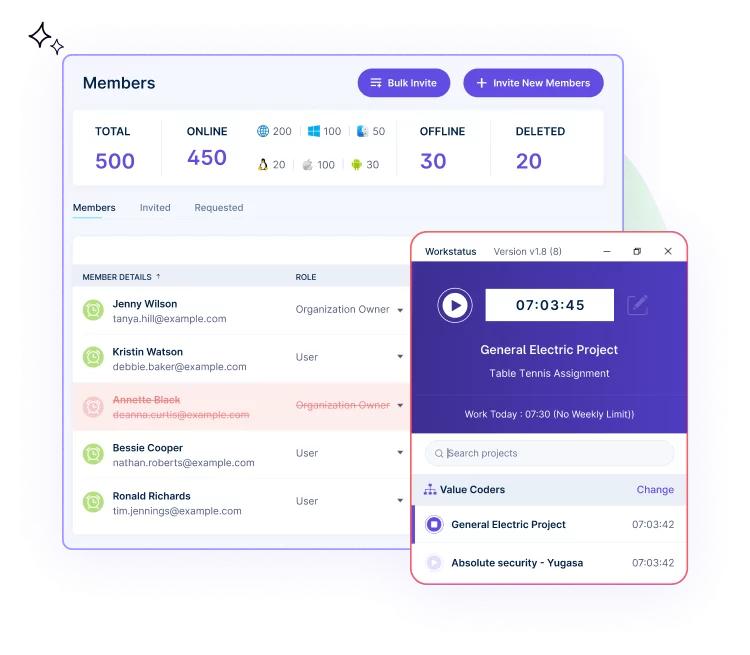
Foster open communication and encourage active participation, setting the stage for collaborative estimation.
Here’s how Workstatus can help:
Feature to use: User and Team Management
- Create and manage software development teams within Workstatus
- Assign roles and permissions to team members for collaboration
Project Scope
Clearly define the project scope, outlining goals, deliverables, and key milestones.
A well-defined scope forms the basis for accurate time estimation.
Here’s how Workstatus can help:
Feature to use: Task Management
- Break down your complex project into tasks and subtasks within Workstatus
- Attach detailed requirements, specifications, and descriptions to each task
Estimation Sessions
Conduct estimation sessions where team members collectively assess and allocate time for various tasks.
Each team member’s input is valuable in crafting a well-rounded estimation.
Here’s how Workstatus can help:
Feature to use: Time Tracking
- Initiate time tracking for each task during estimation sessions
- Monitor the productive and unproductive time spent on every task
Analyze historical data and past project performance.
Calibrate your estimations based on lessons learned from previous projects, ensuring a more accurate projection of time requirements.
Here’s how Workstatus can help:
Feature to use: Historical Data and Analytics
- Access historical time tracking data to make more informed decisions
- Analyze past project data to identify patterns and trends for more accurate calibration
Risk Assessment
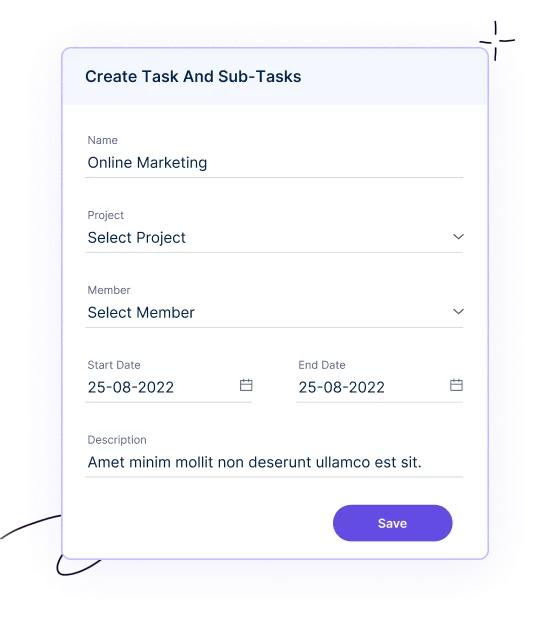
Factor contingencies to account for unforeseen challenges and ensure a more realistic estimation.
Here’s how Workstatus can help:
Feature to use: Add Task Notes
- Use task notes in Workstatus to document potential risks and mitigation strategies
- Discuss and address risks as a team, documenting the outcomes
Consolidation and Consensus
Gather individual estimates and facilitate discussions to reach a consensus.
Consider various viewpoints and align team members’ perspectives to refine the estimation.
Here’s how Workstatus can help:
Feature to use: Reporting and Insights
- Generate reports in Workstatus that aggregate individual time estimates into a collective view
- Gain insights into the consensus reached during estimation sessions
Continuous Monitoring
Monitor task progress in real-time as the project unfolds.
Continuously track how tasks are progressing and adjust estimations as needed to reflect the current status.
Here’s how Workstatus can help:
Feature to use: Real-Time Monitoring
- Continuously monitor the progress of tasks in Workstatus through real-time time tracking
- Receive alerts and notifications for any deviations from the estimated timeline
Stakeholder Engagement
Engage stakeholders by sharing the estimation process, progress reports, and insights.
Keep stakeholders informed and involved to build trust and ensure alignment.
Risks & Benefits of Team-Based Time Estimation
Read the infographics to know the risks and benefits of team-based time estimation:
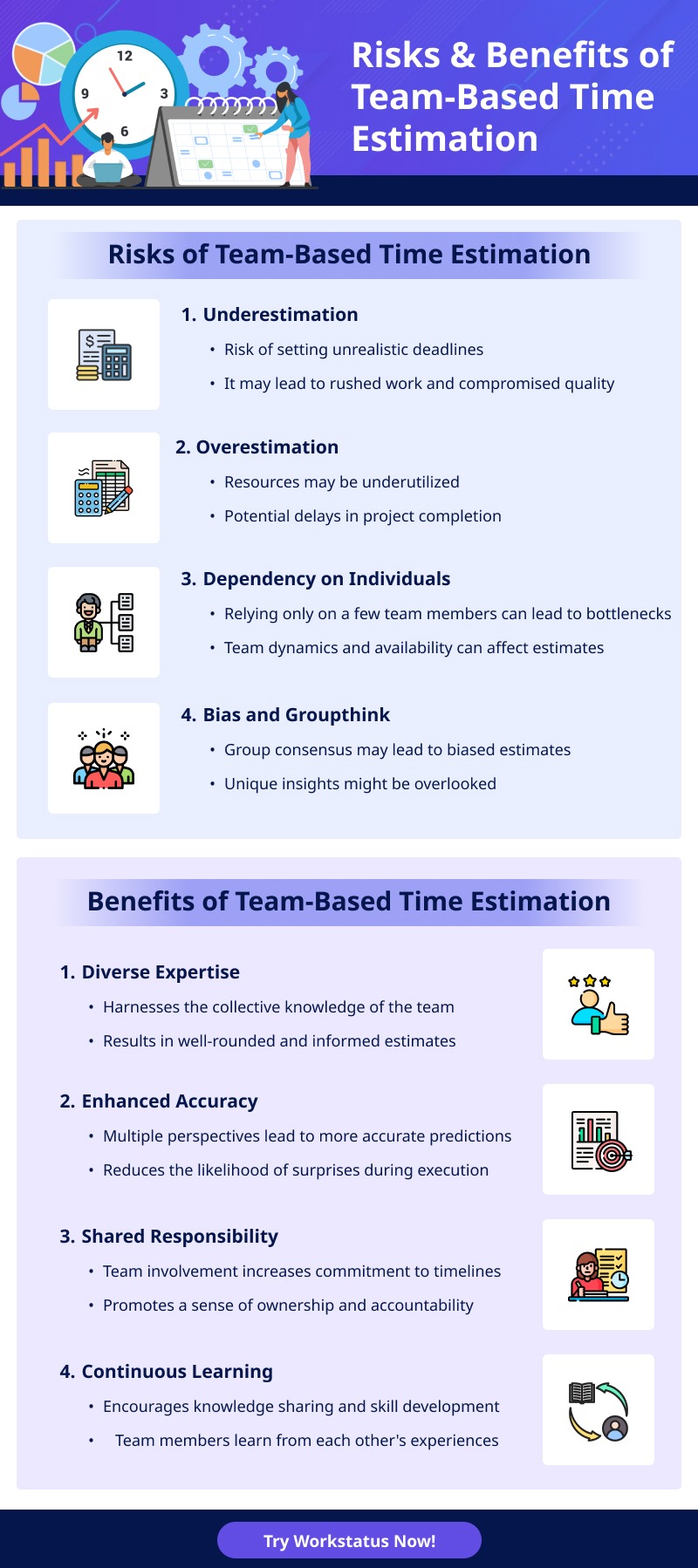
Careful consideration of these factors and effective collaboration can lead to more accurate estimates, efficient project execution, and a stronger, more united team.
Future Trends in Time Estimation
Here are some future trends in time estimation:
- AI-Powered Predictions: Artificial Intelligence (AI) and machine learning algorithms will analyze historical project data to predict accurate time estimates. These systems will adapt and improve over time, enhancing estimation precision.
- Advanced Data Analytics: Time estimation will be fueled by advanced data analytics, allowing for real-time monitoring of project progress, early identification of bottlenecks, and continuous optimization of timelines.
- Remote Work Considerations: Time estimation will accommodate the growing remote workforce, factoring in distributed collaboration, varying time zones, and different work environments.
- Predictive Analytics for Risks: Time estimation will incorporate predictive analytics to identify potential risks and their impact on schedules, enabling proactive mitigation.
Closing Thoughts
In software development, embracing team-based time estimation means navigating risks for rewards.
We forge a path to project success and innovation through open communication and collective expertise.
Moreover, Workstatus emerges as an invaluable ally that empowers you to conquer challenges, streamline workflows, and maximize the rewards of team-based time estimation.




